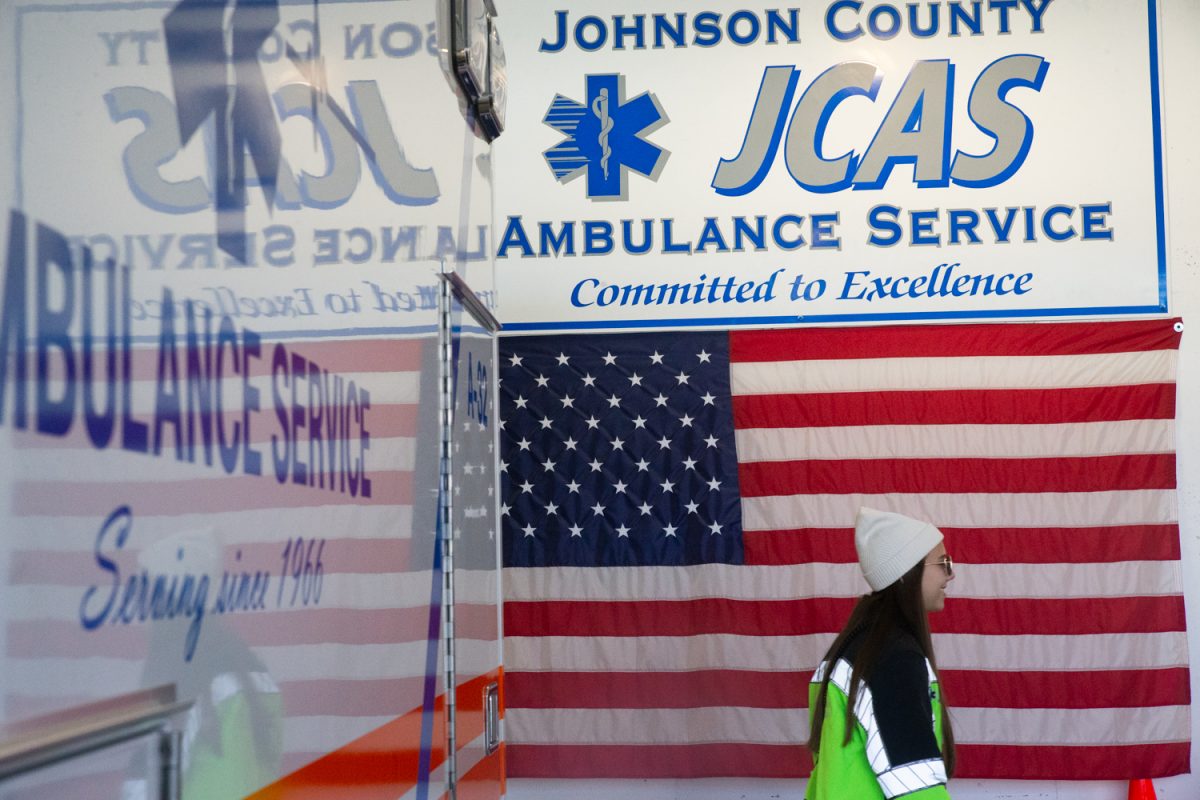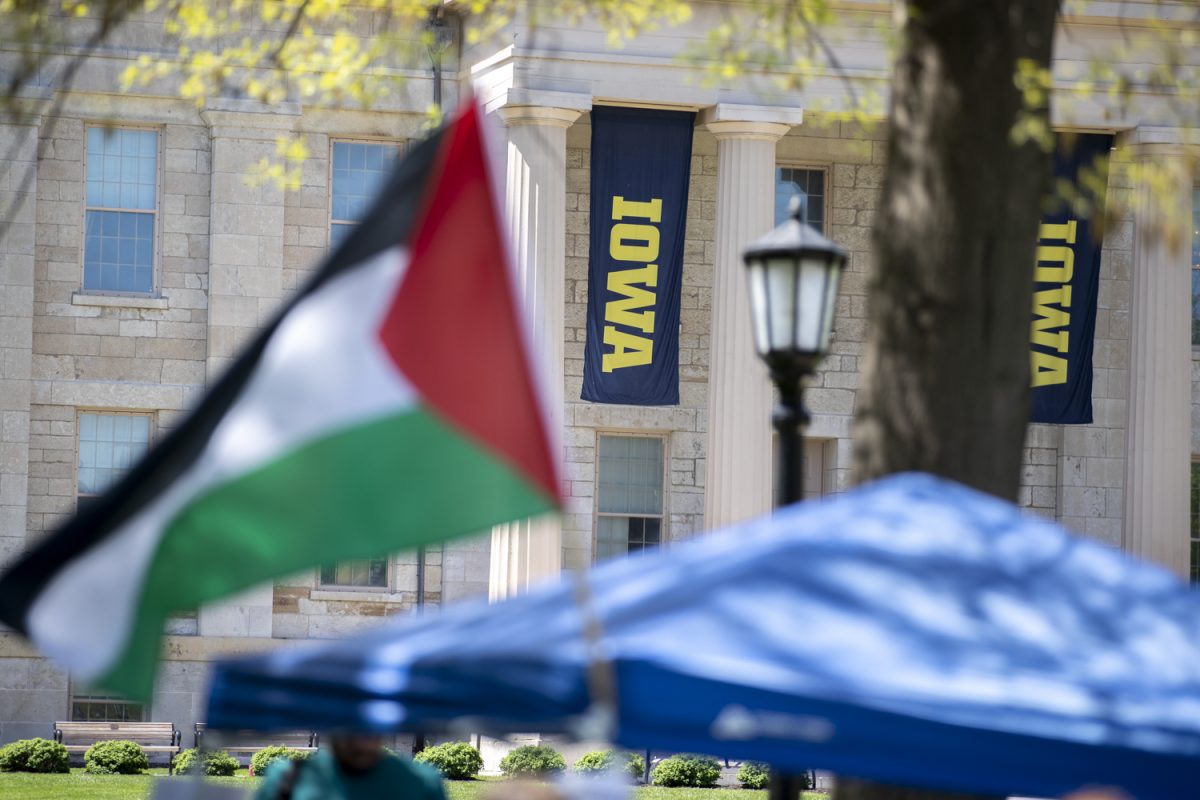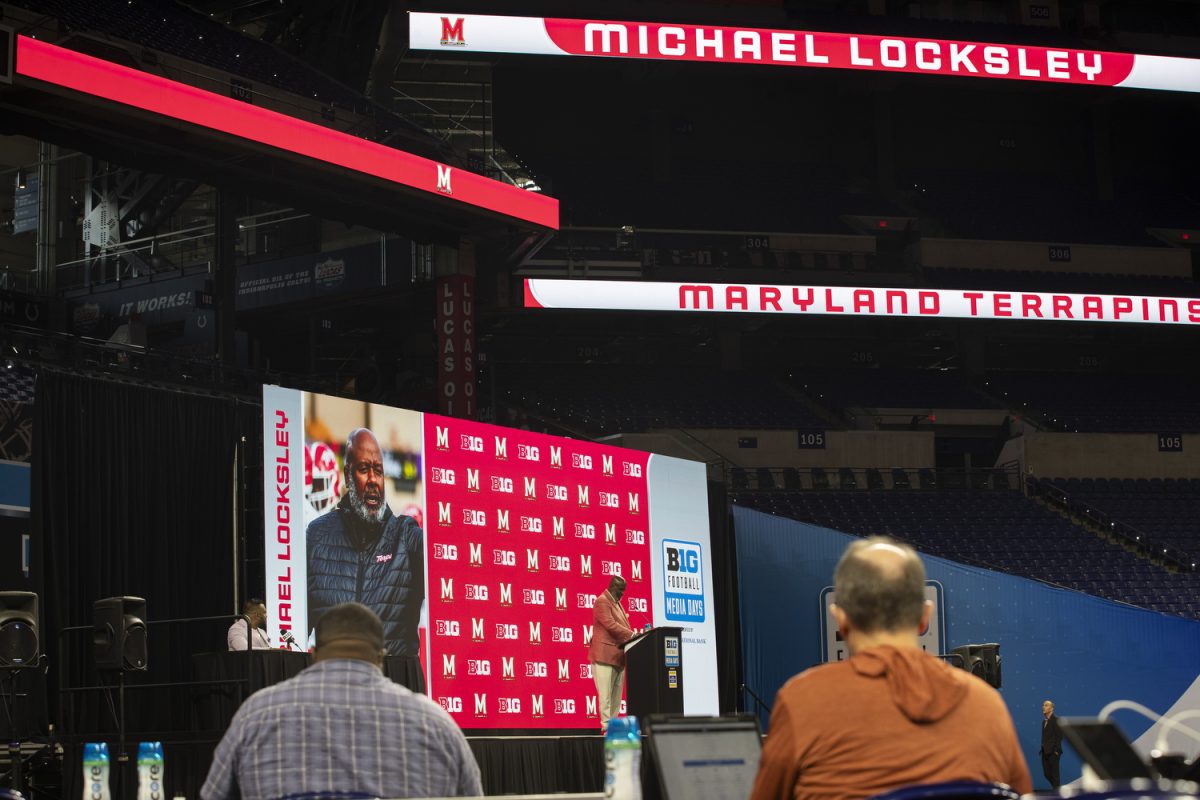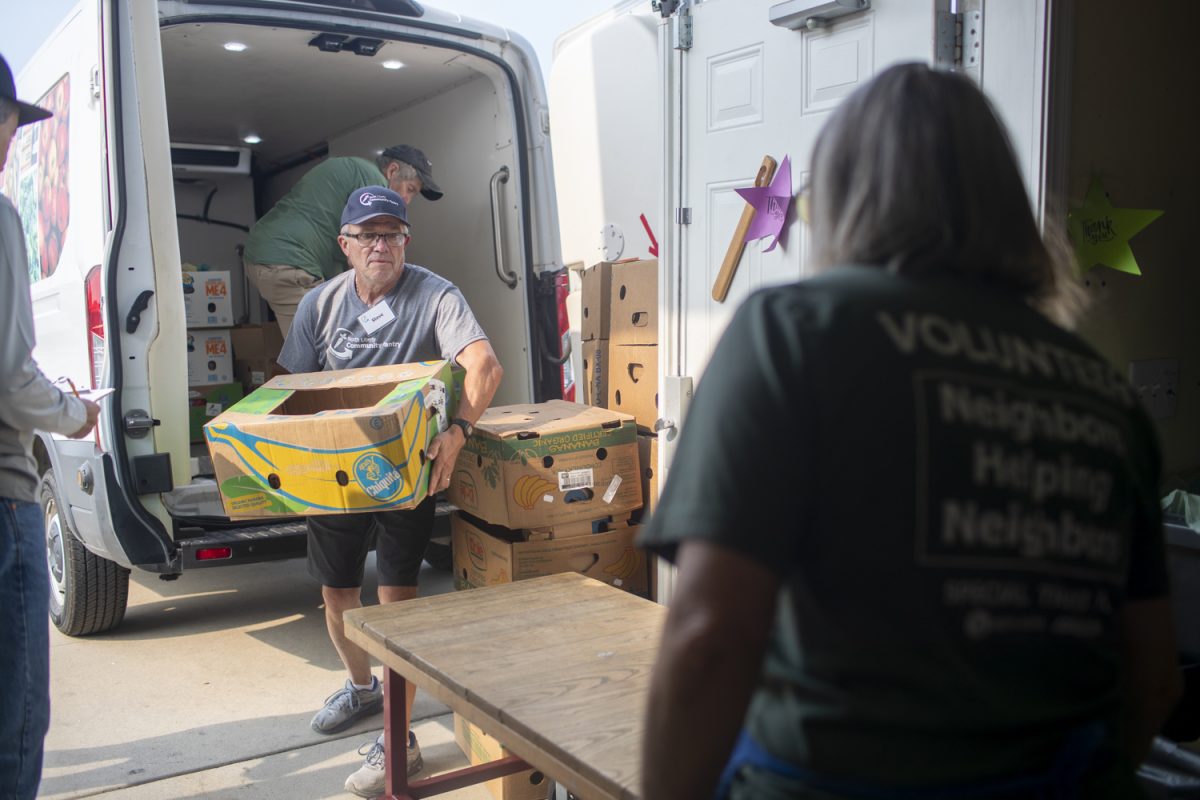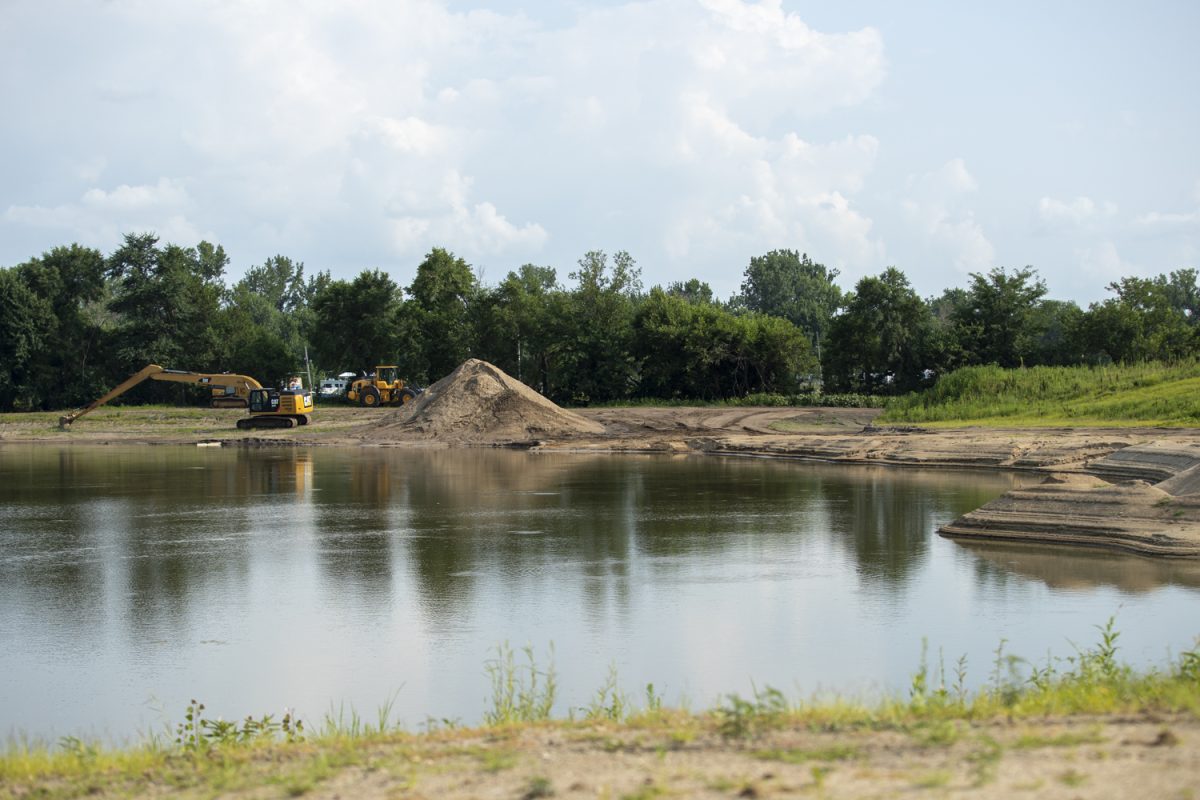Hours before Iowa football’s kickoff on most Saturdays in the fall, a troop of emergency medical staff gather at the Johnson County Ambulance Service building for a pre-game huddle. From that meeting, they will head to Kinnick and gather with University of Iowa doctors, physicians, and students to supplement emergency operations.
“It’s pretty well orchestrated on these days, with extra staff being here,” said Mike Mothershed, a Johnson County paramedic.
When thousands of people flock to Kinnick Stadium from across and outside the state of Iowa, it creates an increased need for emergency services.
Johnson County Ambulance Services partners with University of Iowa Hospitals and Clinics to ensure any emergencies that arise in Kinnick are responded to while maintaining regular ambulance services for county residents.
Ben Symonds, assistant director of JoCo Ambulance Services, estimates there are 75 to 100 patients treated at Kinnick during football games.
“A whole swath of nurses, physicians, and residents help take care of those patients inside the stadium,” Symonds said. “We also have 18 different additional EMS staff that we use to kind of help take care of everything that’s going on inside the game.”
At the start of every football season, responders undergo a four-hour training to familiarize the protocol and ensure everyone knows where services are within the stadium. EMS staff carry radios to communicate, and small bags called sport packs, which contain essential interventions to stabilize patients.
Symonds said fortunately a lot of the staff is well seasoned in responding during home games.
“Everybody’s experienced it enough that they kind of just know how to go about it,” he said.
Outside of the stadium, Symonds says operations continue mostly business as usual.
“We have a competent staff that is able to maintain operations outside as well,” he said. “So, it’s basically like running two services at once.”
Outside the stadium, field supervisors monitor traffic and advise first responders on the most efficient path to take.
“We’ll have a field supervisor who’s running operations inside the stadium and a field supervisor who’s running operations outside on the street. They’re going to be a great point of contact to say, ‘Hey, you know what, you got a call over here off of [Triangle Place]. This is going to be your best point of entry.’”
Paramedic Clem Primer says the main aspect that sets game days apart is just the sheer amount of people in town.
“The amount of calls increases exponentially because there’s 70,000 more people so there’s 70,000 more chances of injury,” Primer said.
The downtown area outside of bars can be congested, as can the pedestrian traffic outside the stadium.
“The streets do get filled full of pedestrians when the game loads out and you literally just have to be patient, take your time,” said Jason Andrews, another paramedic. “And be cognizant that you have a job to do for the patient, but yet you also have to keep yourself and the pedestrian safe, you know, driving appropriately and working with the pedestrian traffic to get to where we need to go.”
Paramedics commonly respond inside Kinnick to falls or people experiencing chest pain, as well as alcohol-related situations.
“I can tell you that especially in the earlier games, we have seen higher call volumes and some of those games where we have a lot of competition like with Iowa-ISU games or when Michigan comes in,” Symonds said.
Though Andrews said the physical location of Kinnick can pose some challenges, with the hospital located right across the street, patients from Kinnick can easily be transmitted to the emergency room if their conditions require it.
“We’re highly trained individuals that essentially have the vast majority of emergency room resources in the back of our ambulance and we just have to adapt and provide appropriate treatment within the limitations and the barriers that arise,” Andrews said.





